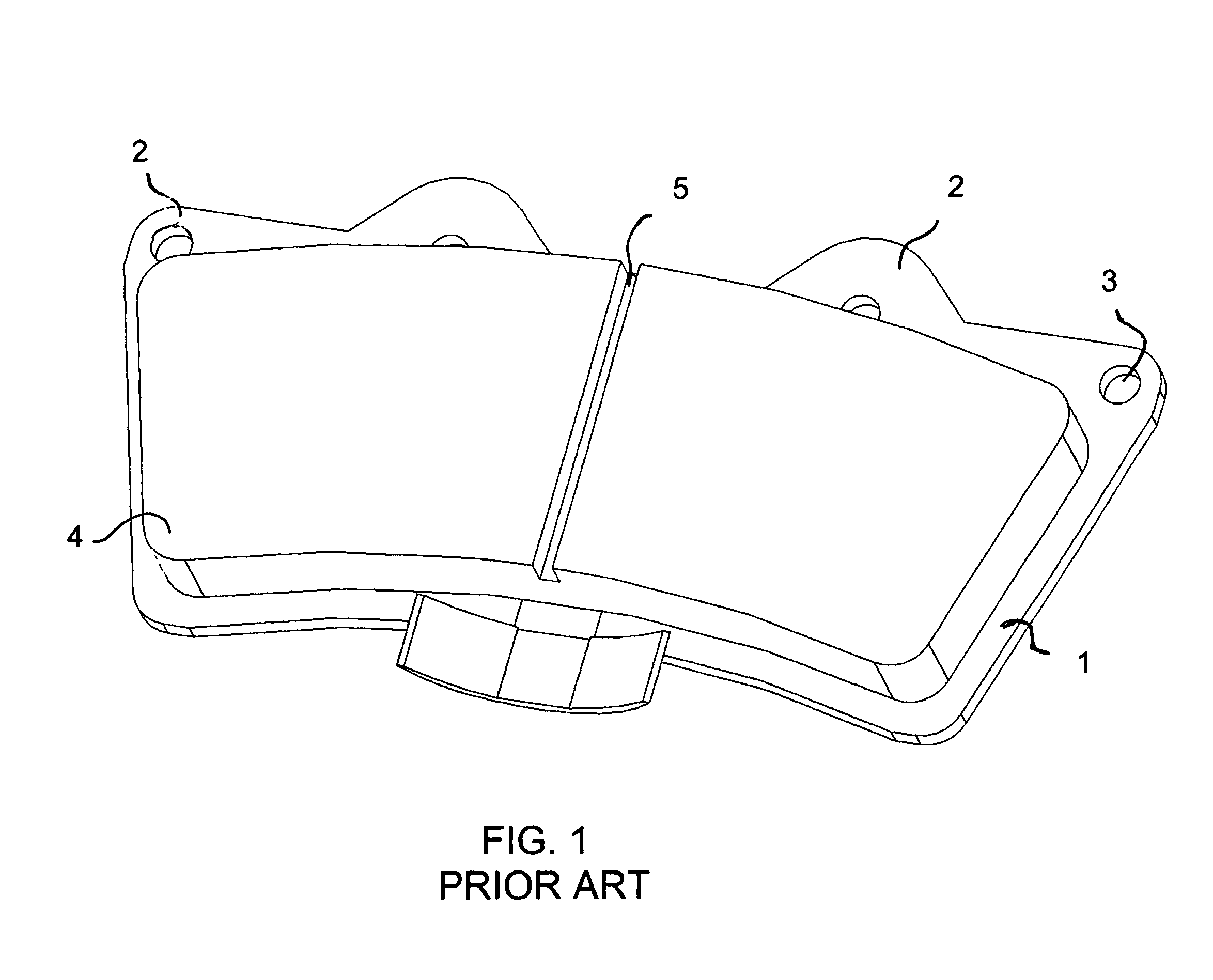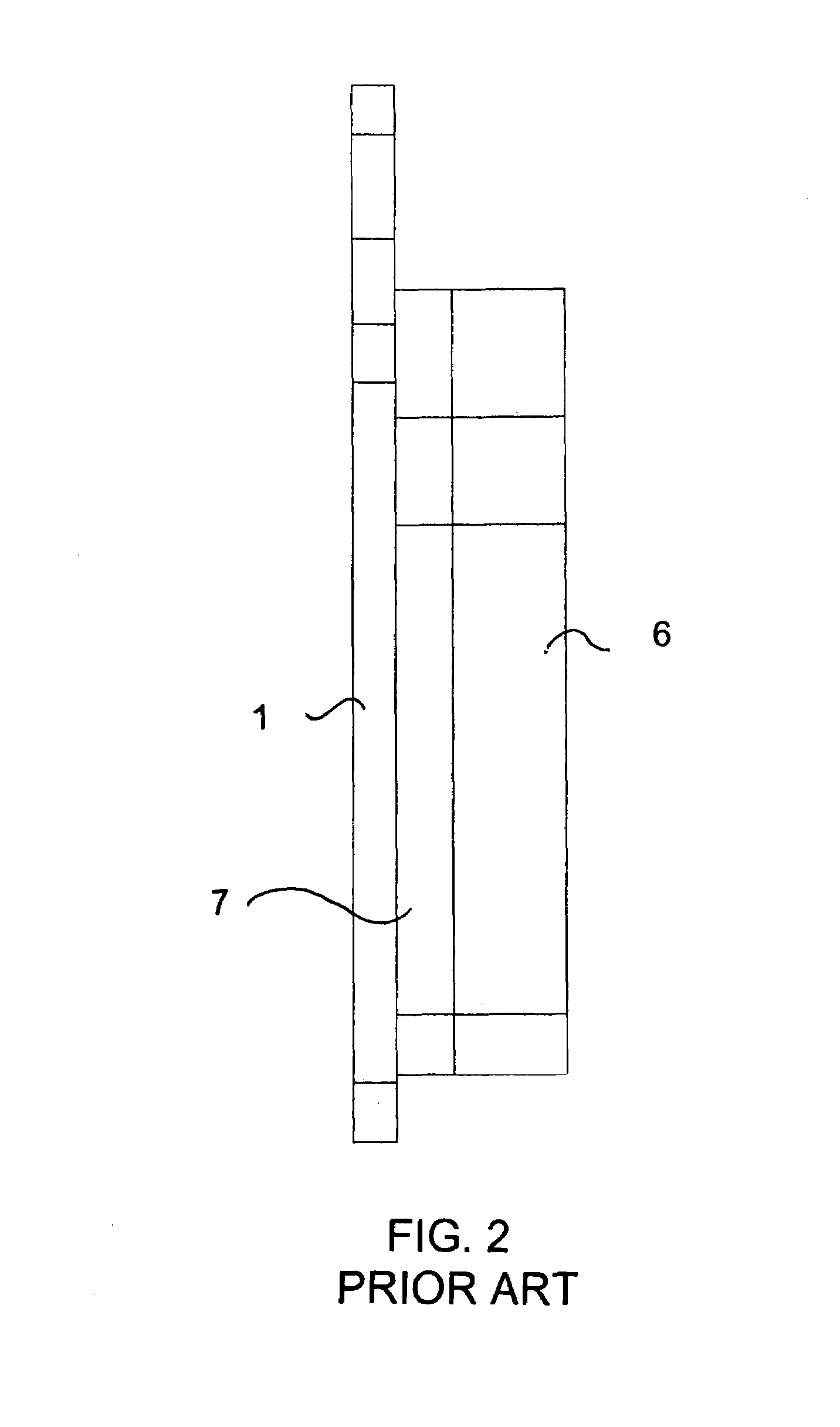Brake pad with wear indicator
a technology of wear indicators and brake pads, applied in the field of brake pads, can solve problems such as catastrophic danger and damage, erode expensive parts, and disturb brakes
- Summary
- Abstract
- Description
- Claims
- Application Information
AI Technical Summary
Benefits of technology
Problems solved by technology
Method used
Image
Examples
Embodiment Construction
[0040]Referring now in detail to the figures of the drawing, in which the same reference numerals have been used for similar features, and first, particularly, to FIG. 1 thereof, there is seen a prior art brake pad having a backing plate 1 with lugs 2 in which mounting holes 3 are formed. A friction material layer 4 is attached to the backing plate 1 for pressing against a rotor or drum. The friction material layer 4 is formed of a strong matrix of tough aramid fibers, rock-hard, sharp-edged, friction particles and heat-resistant hardening resin, which are specially provided for an environment encountering extremes in mechanical forces and temperatures. The integrity of the layer depends on a uniform cohesiveness throughout the layer and strong attachment to the backing plate.
[0041]A groove 5 is cut into the friction material layer 4 to indicate the wear level. Holes may also be formed in the friction material layer to provide the same wear level indication function. The wear at suc...
PUM
 Login to View More
Login to View More Abstract
Description
Claims
Application Information
 Login to View More
Login to View More - R&D
- Intellectual Property
- Life Sciences
- Materials
- Tech Scout
- Unparalleled Data Quality
- Higher Quality Content
- 60% Fewer Hallucinations
Browse by: Latest US Patents, China's latest patents, Technical Efficacy Thesaurus, Application Domain, Technology Topic, Popular Technical Reports.
© 2025 PatSnap. All rights reserved.Legal|Privacy policy|Modern Slavery Act Transparency Statement|Sitemap|About US| Contact US: help@patsnap.com



